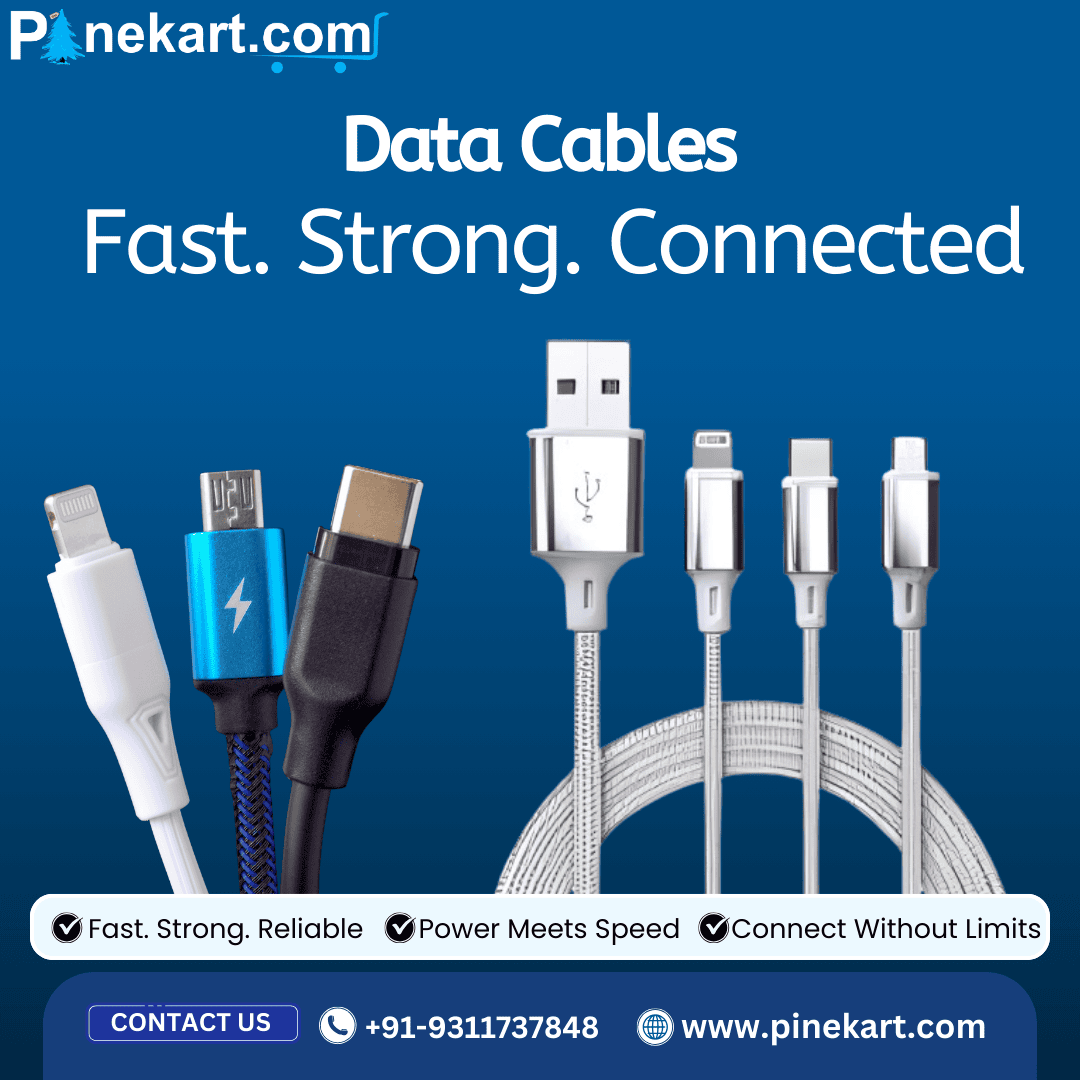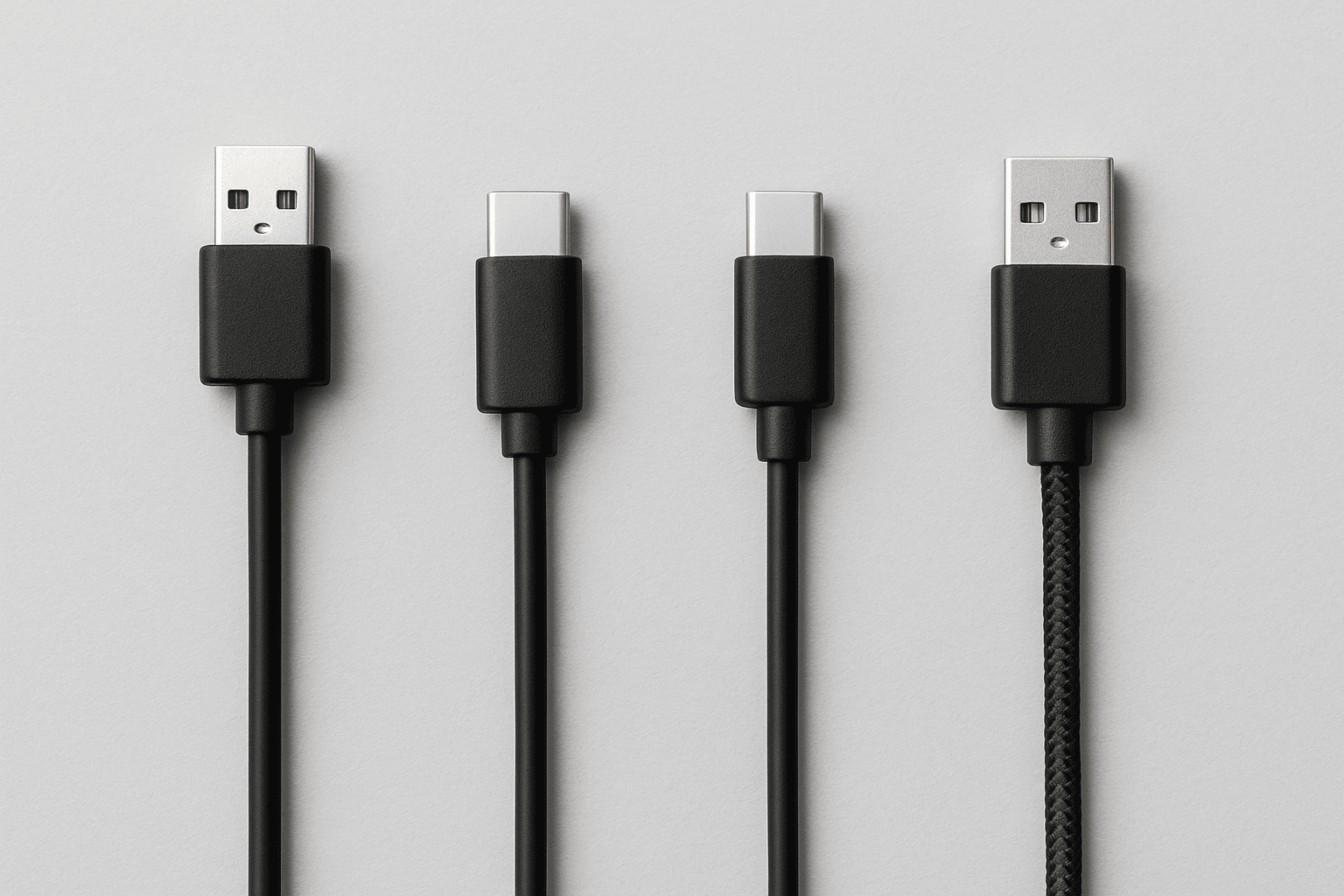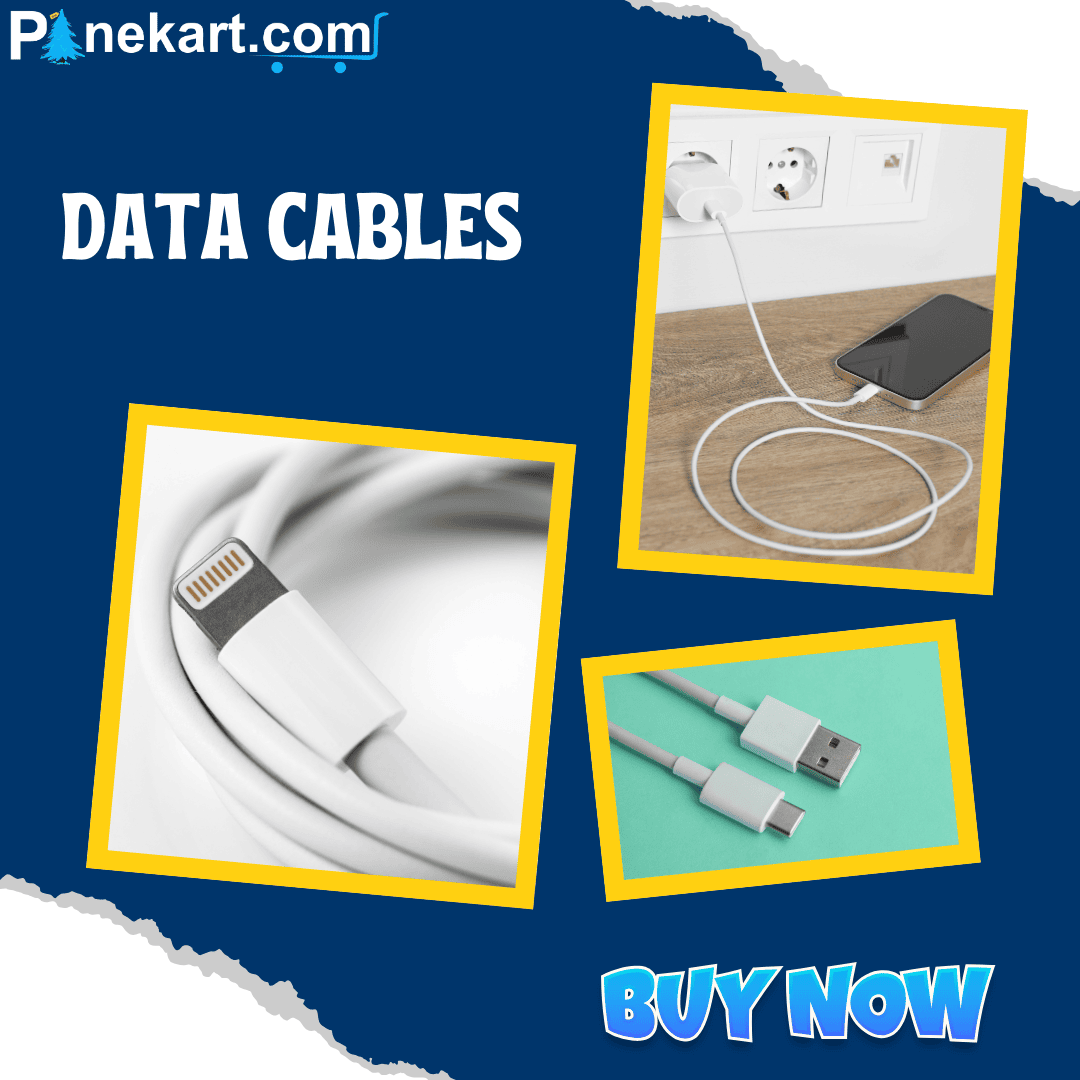In today’s connected world, data cables are more than just accessories — they are essential for powering devices, transferring data, and ensuring seamless communication between gadgets. Whether you’re charging your smartphone, connecting a hard drive, or linking devices for work and entertainment, choosing the right data cable can make a significant difference in performance and longevity. With countless types, standards, and brands available, finding the best option can be confusing. This blog will guide you through everything you need to know about selecting the right data cable for your devices.
Why Choosing the Right Data Cable Matters
Why Choosing the Right Data Cable Matters
Slower charging speeds due to poor current flow.
Reduced data transfer speeds, affecting productivity.
Shorter cable lifespan, leading to repeated replacements.
A reliable data cable ensures safety, efficiency, and compatibility — saving you money and frustration in the long run.
Types of Data Cables
Types of Data Cables
Understanding the different types of data cables is the first step toward making the right choice. Here are the most common ones you’ll come across:
1. USB-A to Micro USB
USB-A to Micro USB used in power banks, Bluetooth speakers, and some older smartphones.
Offers moderate charging and data transfer speeds.
Affordable but gradually becoming outdated.
2. USB-A to USB-C
USB-A to USB-C Commonly used with modern Android smartphones, tablets, and laptops
Faster charging and data transfer compared to Micro USB.
Reversible design for convenience.
3. USB-C to USB-C
USB-C to USB-C Increasingly popular for laptops, smartphones, and tablets.
Future-proof choice for most modern devices.
4. USB-A/USB-C to Lightning
Designed specifically for Apple devices like iPhones, iPads, and some accessories.
MFi-certified cables are recommended for safety and longevity.
5. Specialty Cables
HDMI to USB-C: Used for video output.
Thunderbolt cables: Support ultra-fast data transfer and multiple functionalities.
OTG (On-The-Go) cables: Allow smartphones to connect with USB drives, keyboards, or other peripherals.
Key Factors to Consider When Choosing a Data Cable
Key Factors to Consider When Choosing a Data Cable
1. Device Compatibility
Always check which port your device supports. For example:
iPhones need a Lightning cable.
Most Android phones use USB-C.
Older gadgets might still require Micro USB.
Choosing the wrong type will either not work or may damage the device if forced.
2. Charging Speed
Different cables support different charging standards:
Standard Charging: Around 5W, common in budget cables.
Look for labels like Quick Charge (QC) or Power Delivery (PD) if you want rapid charging.
3. Data Transfer Speed
Not all cables handle data equally well.
USB 3.2 & Thunderbolt 4: Up to 40 Gbps (ideal for heavy file transfers and 4K/8K video).
4. Cable Build Quality
Durability matters because cables undergo constant bending and pulling. Look for:
Nylon-braided cables for extra strength.
Reinforced connectors to prevent fraying.
Tangle-free design for convenience.
High-quality cables last longer and are less likely to cause charging interruptions.
5. Length of the Cable
Short cables (0.5m - 1m): Best for fast charging, as power loss is minimal.
Medium length (1.5m - 2m): Good for everyday use.
Long cables (3m or more): Convenient for distant sockets but may reduce charging efficiency.
Choose the length depending on your usage environment.
6. Safety Features
Low-quality cables can overheat or damage devices. Check for:
Certification (MFi for Apple, USB-IF for USB cables).
Overcurrent protection.
Heat resistance.
Expert Tips for Choosing the Best Data Cable
Expert Tips for Choosing the Best Data Cable
Invest in Certified Brands – Trusted brands ensure compliance with safety standards.
Check Reviews Before Buying – User feedback often highlights durability and performance issues.
Match Cable and Charger Power Ratings – For example, a 100W cable works best with a 100W charger.
Avoid Very Cheap Cables – These may lack proper shielding or safety standards.
Keep a Backup Cable – Having an extra cable prevents downtime during travel or emergencies.
Common Myths About Data Cables
Common Myths About Data Cables
“All cables work the same” – Wrong. Charging speed and data transfer rates vary widely.
“Only original cables are good” – Not true. Certified third-party cables can perform just as well, often at a better price.
“Longer cables charge slower” – Partially true. If well-built, the difference is minimal.
Final Thoughts
Final Thoughts
Choosing the right data cable is not just about convenience; it’s about ensuring the safety and performance of your devices. By considering compatibility, speed, build quality, and certifications, you can make a smart investment that saves you time and money in the long run. Whether you need a simple charging cable or a high-speed Thunderbolt option, always prioritize quality over price.



